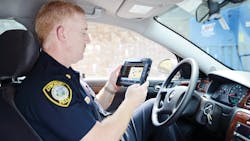Content provided by the Harris Corporation
Over the last several years, the rollout of P25 standards-based solutions and ongoing advancements in new Land Mobile Radio (LMR) technologies has helped keep mission critical voice as the backbone for public safety communications. Many conventional and analog LMR systems are being upgraded to P25 LMR systems to provide increased interoperability, as well as to enhance coverage and capabilities.
The planning process for when and how to upgrade any radio system involves many factors to consider. Increasingly, the availability and maturation of LTE technologies is adding to the list of considerations given the many benefits that come with public safety broadband.
There has been plenty of talk about commercial LTE broadband networks being the next great thing for public safety. Many in public safety, to use a circus analogy, feel they are “between rings” when it comes to communications planning. They need to find a solution to work with the networks they already have while ensuring they are properly positioned for future needs.
The reality is, broadband—able to meet rigorous public safety standards—will happen and there are many positive steps furthering its implementation. Key driving factors in ensuring broadband evolution include public safety’s (and the general public’s) need for enhanced solutions that broadband technologies can enable, the desire for market driven competition, and the crucial need to uphold the promise of an interoperable wireless broadband network for public safety.
Why does all of this matter to law enforcement officers?
Both LMR and LTE provide value for public safety users, however, the approach to LMR and LTE is not an either-or proposition. The greatest benefit is when both technologies can be seamlessly leveraged simultaneously.
Many leading providers of next generation public safety communications equipment currently provide multiple solutions dependent on the network and technology. This disparate approach does not fully leverage the promise of these technologies. Harris Corporation was the first to recognize the importance of LMR mission critical voice capabilities while seamlessly incorporating LTE technology within the same form factor. The Harris XL-200P converged device was a breakthrough that has been well-received and is currently being used by first responders worldwide.
Harris introduced the BeOn® PTT application nearly a decade ago and was the industry’s first PTT solution that leveraged cellular technologies geared specifically at P25 public safety users. Harris’ BeOn® solution enables any iOS or Android smartphone, tablet or Windows PC device to provide push-to-talk (PTT) voice and data communications anywhere in the world via WiFi or LTE—extending the boundaries of regional LMR systems. Since BeOn® was architected based on P25 standards, it ensured a seamless solution to users that leverage LMR capabilities.
Today, Harris has integrated these PTT capabilities into its XL-200P to allow its users to leverage their LMR mission critical PTT while providing a fully interoperable LTE-based PTT solution within the same form factor and user experience. The BeOn LTE based PTT solution is evolving to align with 3GPP standards and will provide XL-200P users a seamless migration path in support of 3GPP standards as market adoptions continues.
In addition to a seamlessly integrated PTT experience, the advantages of these converged solutions are numerous. Utilizing the XL-200P as a platform enables users to link with WiFi and Bluetooth enabled devices, such as body cameras, biometric sensors and wireless headsets to send and receive information. These devices can also receive images and video feeds, providing responding officers with improved situational awareness. While providing these crucial services within a single form factor designed for public safety users, in the case of the XL-200P devices, LMR remains as the most reliable voice link which officers depend on for mission critical voice while the LTE and WiFi links enhance the user experience to provide high speed data to and from the user for better situational awareness.
Converged offerings and devices are the key to maximizing the benefits of disparate technologies to ensure solutions will be answering the call for public safety, and with these devices come many of the benefits that we take for granted in our experience with commercial cellular devices. For starters, universal and fully seamless interoperability is assumed. When we buy and use our commercial mobile devices, we don’t need to think about whether one device will be able to communicate with another. Additionally, we don’t consider which network or transport we leverage; fully expecting that applications and voice work the same. Likewise, for public safety solutions, we can assume law enforcement would have the same expectations.
Another key component for public safety users is coverage. The ability to communicate is a must. Converged devices with their ability to run on LTE and WiFi networks fully complement LMR networks. Having integrated PTT capabilities across numerous coverage options is particularly valuable and eliminates many geographic restrictions, thereby ensuring much greater flow of information to and from officers.
The transformation to next generation public safety communications is well underway. Over the next decade, the solutions and technologies will continue to evolve to provide improved communications (voice and data) for first responders during times when it is needed the most. When the standards for mission critical push to talk (MCPTT) are proven ready by first responder early adopters, the push to widespread LTE broadband will be greatly accelerated—and law enforcement end users who have embraced LMR-LTE converged devices and are already benefitting from broadband capabilities will be well-positioned to quickly take their communications to the next level.



